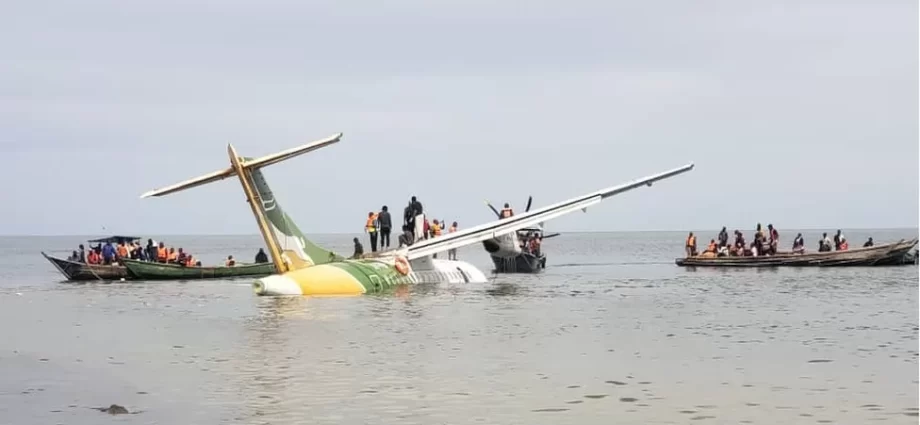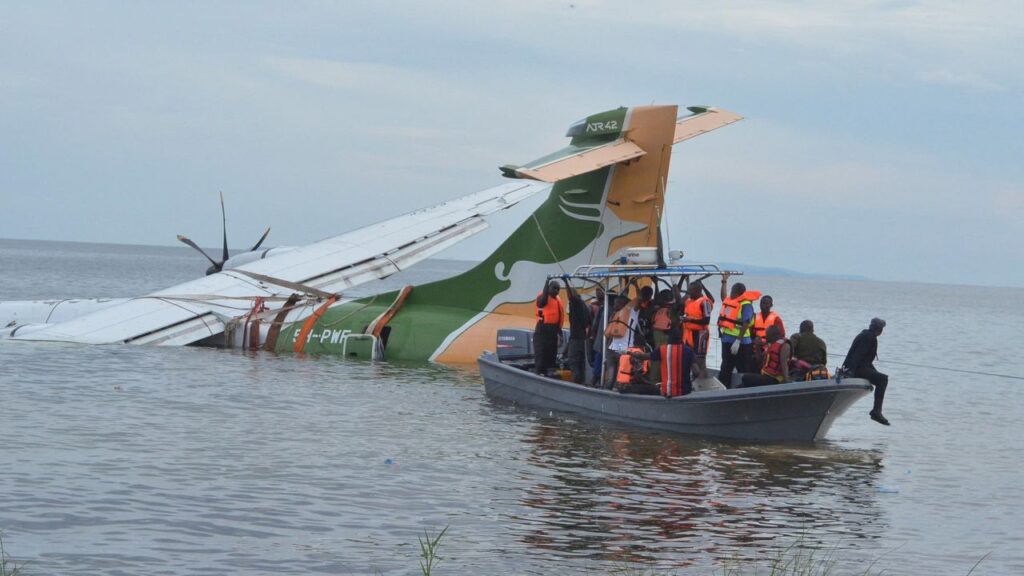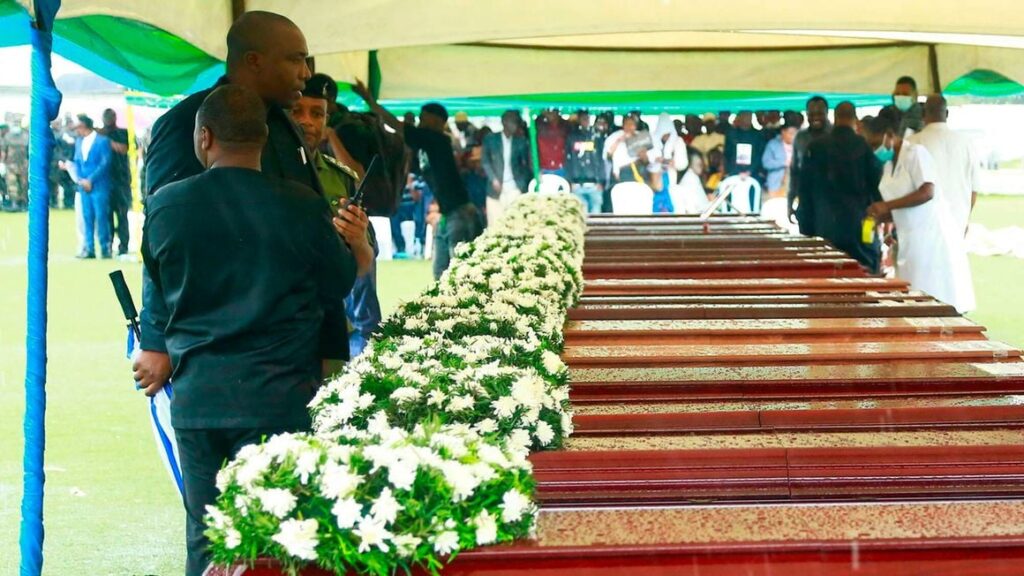THE TANZANIA Cabinet has directed local experts to team up with their foreign counterparts in the aviation industry to investigate the source of the accident involving Precision Air and eventually come up with measures to avert such incidences in the future.
Speaking to journalists in Dodoma on Monday, the Director of Information Services (Maelezo) and Chief Government Spokesperson, Mr Gerson Msigwa, said the directives followed a cabinet meeting chaired by President Samia Suluhu Hassan on Monday.
According to Mr Msigwa, the cabinet also wants disaster management units to be equipped and well prepared for such accidents in the future.
“Tanzania is a member of a number of international aviation conventions; thus, the investigations will be guided by the terms of the conventions on such accidents, especially by adhering to standards and contracts running the aviation industry globally,” Mr Msigwa explained.
He added that the investigation team started work when the accident occurred on November 6, this year, and reports will be in issued in three phases.
Mr Msigwa explained further that the accident bulletin will be issued within 14 days after the occurance, while the preliminary report will be submitted within 30-days and final report within 12-months from the date it happened.
According to Mr Msigwa, the cabinet also paid special tributes to stakeholders, fishermen and all who took part in rescuing passengers during the accident-which involved Precision Air flight from Dar es Salaam to Mwanza via Bukoba.
Mr Msigwa elaborated further that a team of experts from ATR, the manufacturer of the ill-fated aircraft, jetted in the country on November 7, this year to join other experts in investigating the cause of the tragedy.
The aircraft, Precision Air’s 48-seater 5H-PWF, ATR42-500 – carrying 39 passengers (38 adults and one infant) and four crew members – crash-landed on Lake Victoria at 8.53am on November 6, this year, as it was attempting to land at Bukoba Airport, killing 19 people on board and 24 survived.
Speaking in Bukoba after the incident, Prime Minister Kassim Majaliwa assured Tanzanians that the flight still remained the safest mode of transportation, reiterating the government’s resolve to strengthen the sector through modern equipment and regular training on staff under the ministry responsible.
He said a probe team formed by the government would make an analysis and give a technical report on what happened during the accident. The technical team would comprise experts from different ministers.
Under international rules, the locally-led investigation would include participation of experts from France, where the plane was designed, and Canada, where its Pratt & Whitney engines were designed.
Precision Air was established in 1993. It started as a private charter air Transport Company operating a five-seater Piper Aztec aircraft.
Its initial line of business mainly entailed providing connections to tourists visiting the rich natural attractions of Serengeti National Park, Ngorongoro Crater, in northern Tanzania, Zanzibar Island in the Indian Ocean and other parts of the country from Arusha town as its base.
Meanwhile, authorities in Kagera Region have submitted a proposal to the Minister for Works and Transport, Prof Makame Mbarawa, for the construction of the long-awaited Omukajunguti Airport to serve as an alternative of Bukoba Airport.
Kagera Regional Commissioner (RC), Mr Albert Chalamila told reporters over the weekend that the Bukoba Airport was too close to residential areas, and thus a need for an alternative airport, which is safer for aircrafts operations.
“We have already submitted a proposal to the Minister for Works and Transport for the construction of the new airport.
During his recent tour in Kagera Region, Prof Mbarawa assured Kagera residents and all Tanzanians that the government was keen to utilise the project involving construction of a modern airport at Omukajunguti area, in Missenyi District.
He said plans were being made by the government to possess land at Omukajunguti area and later hand it to the Tanzania Airports Authority (TAA) for the intended airport project.
“Construction of the envisaged modern airport would cater for even larger airplanes,” Prof Mbarawa said.
Briefing the minister then, Bukoba Airport Manager, Ms Cecilia Kamwela, said Bukoba Airport handles about 110 passengers on a daily basis.
She appealed to the government to equip the Bukoba Airport runway with reliable electricity that would enable them to operate with ease during the night.
Source: allafrica.com
Share this news
This Year’s Most Read News Stories

US taps Tanzania for infrastructure plan in battle with China for minerals
Washington wants to tap into the country’s minerals, particularly its nickel mines.Continue Reading

Tanzania central bank tells hotels to obtain foreign currency exchange license
BoT governor, Emmanuel Tutuba, urges tourist hotel owners and operators to obtain foreign currency exchange licences to combat the black market.Continue Reading

Tanzania Confirms Second Marburg Outbreak After WHO Chief Visit
Dar es Salaam — Tanzania’s President Samia Suluhu Hassan has declared an outbreak of Marburg virus, confirming a single case in the northwestern region of Kagera after a meeting with WHO director-general Tedros Adhanom Ghebreyesus.
The confirmation follows days of speculation about a possible outbreak in the region, after the WHO reported a number of deaths suspected to be linked to the highly infectious disease.
While Tanzania’s Ministry of Health declared last week that all suspected cases had tested negative for Marburg, the WHO called for additional testing at international reference laboratories.
“We never know when an outbreak might occur in a neighbouring nation. So we ensure infection prevention control assessments at every point of care as routine as a morning greeting at our workplaces.”Amelia Clemence, public health researcher
Subsequent laboratory tests conducted at Kagera’s Kabaile Mobile Laboratory and confirmed in Dar es Salaam identified one positive case, while 25 other suspected cases tested negative, the president told a press conference in Dodoma, in the east of the country today (Monday).
“The epicentre has now shifted to Biharamulo district of Kagera,” she told the press conference, distinguishing this outbreak from the previous one centred in Bukoba district.
Tedros said the WHO would release US$3 million from its emergencies contingency fund to support efforts to contain the outbreak.
Health authorities stepped up surveillance and deployed emergency response teams after the WHO raised the alarm about nine suspected cases in the region, including eight deaths.
The suspected cases displayed symptoms consistent with Marburg infection, including headache, high fever, diarrhoea, and haemorrhagic complications, according to the WHO’s alert to member countries on 14 January. The organisation noted a case fatality rate of 89 per cent among the suspected cases.
“We appreciate the swift attention accorded by the WHO,” Hassan said.
She said her administration immediately investigated the WHO’s alert.
“The government took several measures, including the investigation of suspected individuals and the deployment of emergency response teams,” she added.
Cross-border transmission
The emergence of this case in a region that experienced Tanzania’s first-ever Marburg outbreak in March 2023 has raised concerns about cross-border transmission, particularly following Rwanda’s recent outbreak that infected 66 people and killed 15 before being declared over in December 2024.
The situation is particularly critical given Kagera’s position as a transport hub connecting four East African nations.
Amelia Clemence, a public health researcher working in the region, says constant vigilance is required.
“We never know when an outbreak might occur in a neighbouring nation. So we ensure infection prevention control assessments at every point of care as routine as a morning greeting at our workplaces.”
The Kagera region’s ecosystem, home to fruit bats that serve as natural reservoirs for the Marburg virus, adds another layer of complexity to disease surveillance efforts.
The virus, closely related to Ebola, spreads through contact with bodily fluids and can cause severe haemorrhagic fever.
Transparency urged
Elizabeth Sanga, shadow minister of health for Tanzania’s ACT Wazalendo opposition party, says greater transparency would help guide public health measures.

Sign up for free AllAfrica Newsletters
Get the latest in African news delivered straight to your inbox
“This could have helped to guide those who are traveling to the affected region to be more vigilant and prevent the risk of further spread,” she said.
WHO regional director for Africa Matshidiso Moeti says early notification of investigation outcomes is important.
“We stand ready to support the government in its efforts to investigate and ensure that measures are in place for an effective and rapid response,” she said, noting that existing national capacities built from previous health emergencies could be quickly mobilised.
The situation coincides with leadership changes in Tanzania’s Ministry of Health, with both the chief medical officer and permanent secretary being replaced.
This piece was produced by SciDev.Net’s Sub-Saharan Africa English desk.
Source: allafrica.com













